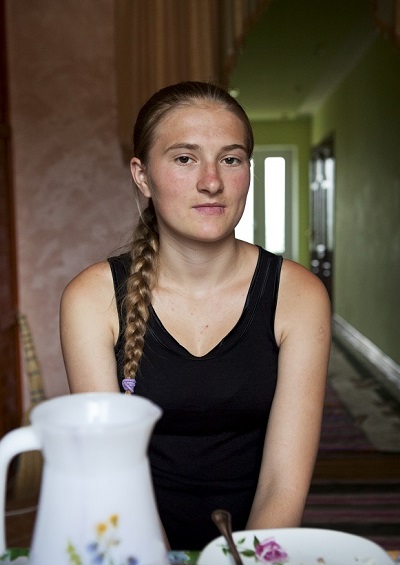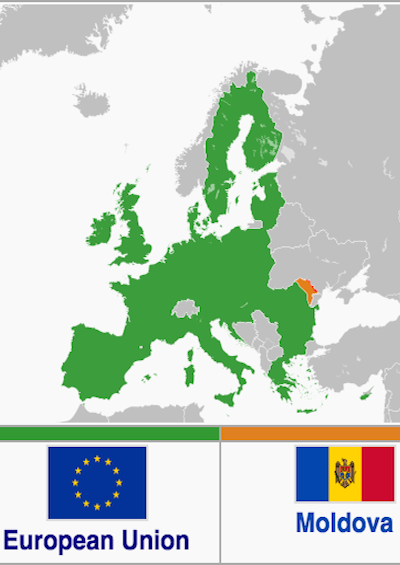Moldova: Children of Migrants Abroad
Moldova’s weak job market forces migrant workers to leave their families.
May 22, 2015

Andrea Diefenbach is a German photographer who works for magazines and on personal projects. Her work about labor migrants from Moldova and the children they leave behind has just been published as a book, Land Ohne Eltern (Land Without Parents).
In Moldova, Europe’s poorest country, 40% of people live below the poverty line. With jobs both scarce and badly paid, more than one-third of adult Moldovans work abroad, the highest proportion of any country worldwide. Remittances from these migrant workers help keep the country from economic collapse. However, in many cases, their children are left behind.
Text and photographs by Andrea Diefenbach
Olga, Carolina and Sabrina were twelve, ten and seven when their mother, Tanja, left to work in Italy five years ago. For three years they lived by themselves until other families in their neighborhood took them in.
Carolina speaking with Tanja. Her mother paid traffickers €4,000 to transport her to Italy, where she earns €850 a month working illegally as a carer for elderly people.
A baby whose father and grandmother work in Italy.
Alexandra lives with her older sister in a house their mother is gradually building with money from her work in Italy. The mother left Moldova almost seven years ago, paying people smugglers €3,700 to help her make her way on foot over the Carpathian Mountains. She now earns €750 a month working as a carer for elderly people. She was unable to return home during her first three years away, but since then she has made annual trips to see her children.
Gabriela and Marina live with their brother, and sometimes their father. Their mother went to Italy eight years ago. For a long period they heard little from her, but recently she has started sending them occasional parcels. Their father works in Moscow, returning home between jobs.
 Andrea Diefenbach is a German photographer who works for magazines and on personal projects. Her work about labor migrants from Moldova and the children they leave behind has just been published as a book, Land Ohne Eltern (Land Without Parents).
Andrea Diefenbach is a German photographer who works for magazines and on personal projects. Her work about labor migrants from Moldova and the children they leave behind has just been published as a book, Land Ohne Eltern (Land Without Parents).The Other Hundred is a unique photo-book project (order here) aimed as a counterpoint to the Forbes 100 and other media rich lists by telling the stories of people around the world who are not rich but who deserve to be celebrated.
Its 100 photo-stories move beyond the stereotypes and cliches that fill so much of the world’s media to explore the lives of people whose aspirations and achievements are at least as noteworthy as any member of the world’s richest 1,000.
 Selected from 11,000 images shot in 158 countries and submitted by nearly 1,500 photographers, The Other Hundred celebrates those who will never find themselves on the world’s rich lists or celebrity websites.
Selected from 11,000 images shot in 158 countries and submitted by nearly 1,500 photographers, The Other Hundred celebrates those who will never find themselves on the world’s rich lists or celebrity websites.





